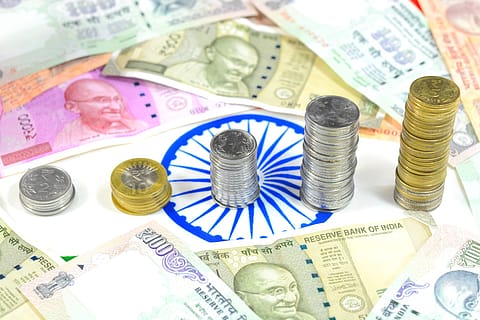India grew 6.2% in Q3 FY25, but short-term indicators mixed: BCG Economic Monitor
Among sectoral gross value added, the services sector led growth at 7.4% YoY, while industrial output rebounded to 4.5% YoY, supported by the construction sector, despite a slowdown in mining.

India's real GDP rebounded to 6.2% YoY after hitting a 7-quarter low in the previous quarter in October-December 2024, driven by private consumption and government spending, according to the March 2025 India Economic Monitor by global consultancy firm BCG. However, short-term indicators across sectors remained mixed, with some showing growth, while others flagged caution due to volatility, high interest rates, and global uncertainties.
Among sectoral gross value added, the services sector led growth at 7.4% YoY, while industrial output rebounded to 4.5% YoY, supported by the construction sector, despite a slowdown in mining. Agriculture improved steadily to 5.6% YoY, benefiting from favourable monsoons. Private consumption rose 6.9% YoY, fueled by rural demand and festive spending. Although government expenditure declined from the previous quarter, it recorded a strong 8.3% YoY growth. Gross capital formation declined from the previous quarter, with the YoY growth rate also slowing significantly to 5% compared to the same quarter of FY24.
The BCG report says in February 2025, high-frequency indicators exhibited mixed trends vs. the previous month, reflecting both sector-specific factors and the effect of February’s shorter duration. IIP reached an all-time high in Jan'25, driven by the mining and electricity sector indices. While cement production and daily average power consumption grew, steel consumption declined vs. the previous month. The auto sector saw declines across most categories in February 2025, reflecting seasonal trends amid subdued market sentiment.
In the trade segment, merchandise trade deficit narrowed sharply to a 3.5-year low of $14 billion in February 2025, driven by a significant fall in gold and crude oil imports. Services trade surplus registered a decline, driven by a fall in exports. Forex reserves increased owing to a rise in foreign currency assets and gold reserves. FDI started the year on a positive note in January 2025, continuing its upward trajectory from December 2024.
BFSI indicators showed mixed trends in February 2025. While aggregate deposits and credits reached record highs, UPI transactions eased slightly to ₹22 trillion in February 2025 after reaching their all-time high in January 2025. Life insurance premiums declined vs. January 2025, while health insurance premiums witnessed some growth. However, overall non-life insurance premiums registered a MoM decline. Meanwhile, the data shows transactions on both NSE and BSE declined sharply, reaching a 15-month low amid heightened market volatility, foreign investor outflows, and global economic concerns.
On the macroeconomic front, overall WPI inflation edged up slightly to 2.4% in Feb'25, driven by higher prices of manufactured goods. CPI inflation eased to a 7-month low of 3.6%, primarily attributed to a slowdown in food and beverage inflation. Manufacturing PMI dipped to 56.3 amid a slight loss of momentum in new orders and production. In contrast, Services PMI rose to 59, supported by strong demand and productivity gains. GST collections recorded a MoM decline, primarily due to a sharper drop in revenue from imports. The RBI cut the repo rate by 25 bps to stimulate economic growth, marking its first reduction in nearly 5 years. Analysts forecast FY26 GDP to grow between 6.3-7.0%.